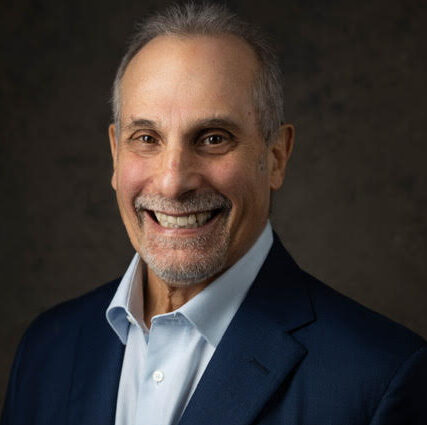
(By John Shomby) Mobile devices and smart speakers have become the main listening vehicles for most age groups. This has not been an overnight event. It’s been happening for the past 5 to 7 years, at least. With that in mind, I’m repeatedly flabbergasted so many radio station streams sound as poorly as they do.
As I’ve mentioned in previous columns, I make it a point to listen to one radio station per weekday for about 2-3 hours. I listen across market sizes and company sizes on my office smart speaker which means I listen exclusively to station streams. Right now, I’m hearing about 75% of the radio stations that apparently still haven’t realized the percentage of stream listening is increasing by the day. It is time – let me rephrase that – it is well past the time to start paying as much attention to your stream as your over-the-air product.
I’m going to assume, first and foremost, that you are already giving the listeners proper direction for listening online to smart speakers, Bluetooth, your app, or your website. Make sure you have clear commands for smart speakers and easy access to your app or website.
One important technical aspect of your stream is obvious but some do miss it – make sure you sound loud and clear. You’d be surprised how many times I’ve had to ask Alexa to “turn it up!” Just in the past two weeks, I’ve listened to three MAJOR market stations whose commercial breaks were distinctively lower in volume than their imaging and music to the point of being jarring.
If you’re doing Total Line Reporting, you are simulcasting your over-the-air product. It is definitely recommended that you go this route, but some companies are trying to cash in on the separation. Some ARE doing it fairly successfully and some are NOT.
If you are NOT in Total Line Reporting your stream breaks are different from your over-the-air breaks. You MUST make sure, from the technical side, that your insertion systems are working the way you want, that is, if you are paying attention. It’s no different than setting up breaks on an over-the-air program log. Just know that this is a definite “garbage in-garbage-out” situation so you really need to be careful lining up what you want in those breaks especially if you’re not sold out.
I’ve heard some station streams running the same PSA, podcast promo, or commercial twice and, sometimes, three times in a break. I’ve also heard excerpts of generic instrumental music filling slots. I actually heard this on a station, recently, in a top 10 market!
My question to any Program Director would be, “Is this what you would want to hear on your over-the-air product?” You can create slots from artist interviews the station has done. Most labels have fill material for streams that would work perfectly. Maybe there is a local spotlight you can slot in, periodically, for a charity or organization or local recording artists.
Have someone on your staff who is the most tech-savvy (if you don’t have a digital department) help with all of this. This is a chance to REALLY be local, informative, and entertaining!
Be mindful that the technology will keep advancing and the listeners will advance with it, especially with the ever-changing automobile dashboard. Adapt and put in the time and attention and discount the myth that over-the-air is the higher priority. Not anymore!
Based in Nashville, TN, John Shomby is the owner and CEO of Country’s Radio Coach. He is focused on coaching and mentoring artists, radio programmers, and on-air talent to help them grow and develop inside the radio station and the industry. Reach John at [email protected] and 757-323-1460. Read John’s Radio Ink archives here.







100% Agree! It’s incredible how many broadcasters, including major brands, are effectively neglecting their streams!
After all the design, build and operational effort to run a successful audio brand and then you turn on the broadcaster’s stream that sounds like it’s under water. Some of them are < 64k with dense audio processing – they just sound awful.
Audio processing really is the public interface, just like a sales person meets customers in a store, it must receive the attention it deserves to attract and keep listeners.
I’ve been writing about this for years. I’ve even done videos for stations showing them the issues listeners have or will encounter when trying to find their radio station(s) on the smart speaker. Asking Google or Alexa for your station, and getting a completely different station (including the competitor), etc… And don’t just rely on Alexa. Google does a better job than Alexa.
That’s just the beginning. Like you said, pay attention. Make it clear and easy for your listeners to find your station.
John,
Thanks for raising awareness of this issue. You are right in that the percentage of listening to AM/FM radio happening in stream is now very meaningful. Edison Research said 13% last July* – but we know that can be as high as 25% for certain stations. You hit the nail on the head when you called it a “garbage-in, garbage-out situation”. There are systems available for inserting streaming ads into radio broadcast are highly competent and able to manage the issues you cite in your piece (i.e., sound quality and repeating creative such as PSA’s). The issues invariably come down to a lack of attention to how these systems are integrated with the broadcast equipment, and/or how they are operated locally. The fixes aren’t any harder to get at than over the air solutions – it just requires someone to do it. Radio station staffs are certainly overworked/over tasked. I worry that this important and growing connection to the audience is not getting the TLC it deserves.
John Rosso
CEO
Triton Digital
*https://www.edisonresearch.com/mid-year-check-in-am-fm-radio-listening-via-streaming-remains-at-13/